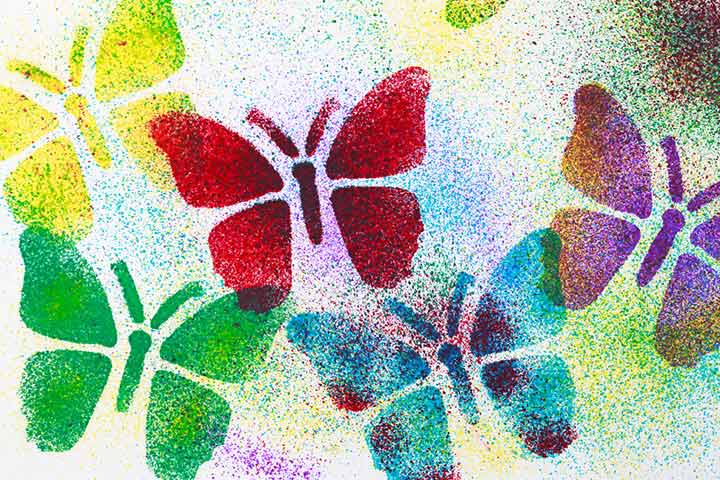
The Feminist art movement began in the 1960s during the second wave of feminism. Artists continue to make important works of art in a wide variety of styles and aesthetic temperaments-their merits are left to the public and the marketplace to judge. In an epoch characterized by the idea of pluralism, there is no consensus as to a representative style of the age. The vitality and versatility of painting in the 21st century defy the previous "declarations" of its demise. This has not deterred the majority of living painters from continuing to practice painting either as a whole or part of their work. Modern and Contemporary art has moved away from the historic value of craft and documentation in favour of concept. Eastern and African painting, however, continued a long history of stylization and did not undergo an equivalent transformation at the same time.
Watercolor and spray paint canvas art series#
A series of art movements in the late 19th and early 20th centuries-notably Impressionism, Post-Impressionism, Fauvism, Expressionism, Cubism, and Dadaism-challenged the Renaissance view of the world. In the decades after the first photograph was produced in 1829, photographic processes improved and became more widely practiced, depriving painting of much of its historic purpose to provide an accurate record of the observable world. The invention of photography had a major impact on painting. In the East, ink and color ink historically predominated the choice of media, with equally rich and complex traditions. In Western cultures, oil painting and watercolor painting have rich and complex traditions in style and subject matter. There are examples of cave paintings all over the world-in Indonesia, France, Spain, Portugal, Italy, China ,India, Australia, Mexico, etc. Archaeologists have also found a fragment of rock painting preserved in a limestone rock-shelter in the Kimberley region of North-Western Australia, that is dated 40,000 years old. In the lowest layer of material at these sites, there are used pieces of ochre estimated to be 60,000 years old. However, the earliest evidence of the act of painting has been discovered in two rock-shelters in Arnhem Land, in northern Australia. More recently, in 2021, cave art of a pig found in an Indonesian island, and dated to over 45,500 years, has been reported. The finding was noted to be “the oldest pictorial record of storytelling and the earliest figurative artwork in the world”. In December 2019, figurative cave paintings depicting pig hunting in the Maros-Pangkep karst in Sulawesi were estimated to be even older, at at least 43,900 years old. In November 2018, however, scientists reported the discovery of the then-oldest known figurative art painting, over 40,000 (perhaps as old as 52,000) years old, of an unknown animal, in the cave of Lubang Jeriji Saléh on the Indonesian island of Borneo ( Kalimantan).

The oldest known paintings are approximately 40,000 years old, found in both the Franco-Cantabrian region in western Europe, and in the caves in the district of Maros ( Sulawesi, Indonesia). It was painted 40,000–52,000 years ago or earlier. The oldest known figurative painting is a depiction of a bull that was discovered in the Lubang Jeriji Saléh cave in Indonesia. Examples of this kind of painting range from artwork depicting mythological figures on pottery, to Biblical scenes on the Sistine Chapel ceiling, to scenes from the life of Buddha (or other images of Eastern religious origin).

Paintings can be naturalistic and representational (as in still life and landscape painting), photographic, abstract, narrative, symbolistic (as in Symbolist art), emotive (as in Expressionism) or political in nature (as in Artivism).Ī portion of the history of painting in both Eastern and Western art is dominated by religious art. Painting is an important form of visual art, bringing in elements such as drawing, composition, gesture, narration, and abstraction. The support for paintings includes such surfaces as walls, paper, canvas, wood, glass, lacquer, pottery, leaf, copper and concrete, and the painting may incorporate multiple other materials, including sand, clay, paper, plaster, gold leaf, and even whole objects. In art, the term "painting" describes both the act and the result of the action (the final work is called "a painting"). The medium is commonly applied to the base with a brush, but other implements, such as knives, sponges, and airbrushes, can be used. Painting is the practice of applying paint, pigment, color or other medium to a solid surface (called the "matrix" or " support"). An artistic depiction of a group of rhinos was made in the Chauvet Cave 30,000 to 32,000 years ago.


 0 kommentar(er)
0 kommentar(er)
